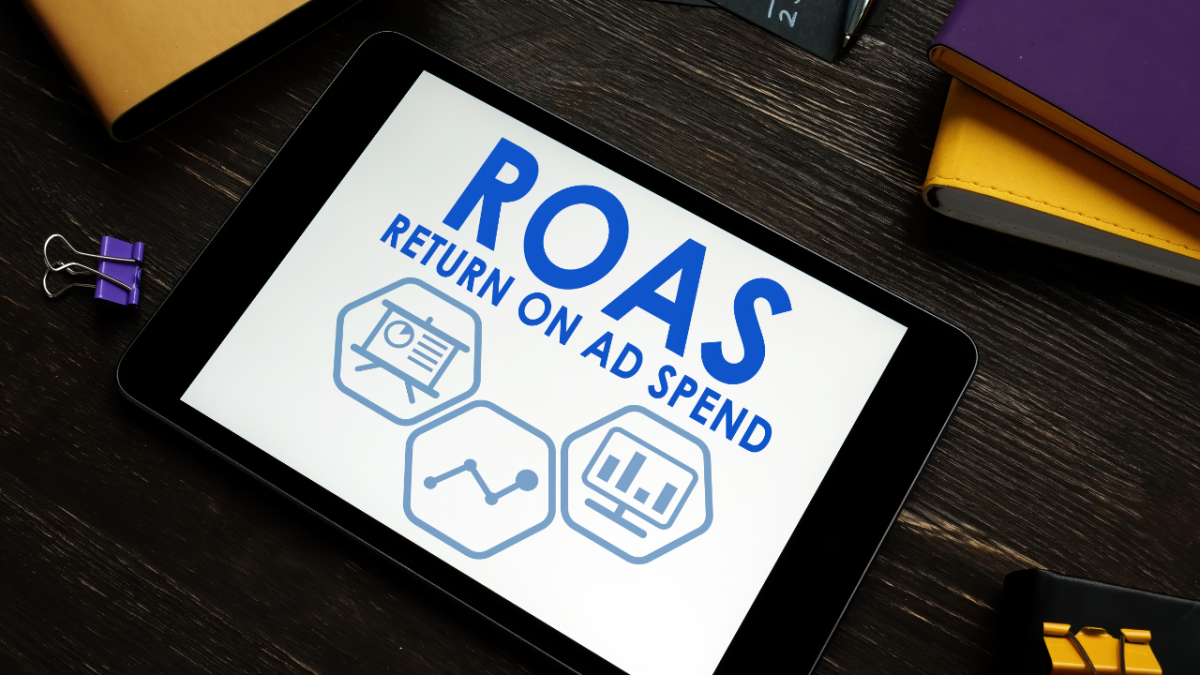When it comes to advertising platforms, it doesn’t get much bigger than Google Ads.
A staggering amount of money flows through Google advertising channels every single day.
In fact, it’s estimated that Google Ads accounted for almost 29% of global digital ad spend in 2021.
(If that statistic doesn’t blow your mind, we’re not sure what will.)

Boost E-Commerce ROI: Download Our Free CPA & ROAS Calculator
But although Google is a colossal force in the world of digital marketing, you might still be questioning if it’s the right place to spend your ad budget.
It’s a fair question. And one that we’re going to answer.
Read on to find out if Google Ads actually work, and if the results are worth the investment.
As a specialist Google ads agency we can help you with your campaigns just get in touch for a free consultation.
What are Google Ads?
The world of Google Ads (formerly Google Adwords) can seem a little complex at first, with various types of paid ads available.
However, there are just five types of Google Ad to wrap your head around:
- Search Ads
- Display Ads
- Video Ads
- Google Shopping Ads
- App Ads
Each of these formats is available to buy through a PPC (Pay Per Click) model. They’re sold through real-time auctions, where advertisers bid to display their ad.
How does the Google Ads auction work?
Two key factors will determine the success of a bid in the Google Ads auction.
The first is the size of the bid. In other words, the amount an advertiser is willing to pay to appear within a certain keyword search.
The second is the quality of the ad itself. Google assigns advertisers a Quality Score based on the relevance of their ads, their expected Click Through Rate, and their landing page experience.
These two factors combine to provide advertisers with an Ad Rank. It’s this rank that determines how successful their bidding will be.
Advertisers with a higher Quality Score are more likely to succeed in their bidding and achieve a lower Cost Per Click.
PPC campaigns are popular with digital advertisers because you’re only charged when a user clicks on your ad. This offers a level of cost efficiency that can help advertisers to make the most of their marketing budget and maintain a positive ROAS.
Now let’s take a look at the different Google Ads formats available to advertisers.
1. Google Search Ads
Google Search ads are immensely popular with e-commerce advertisers.
These placements appear on the Google search engine results page (SERP) and are highly visible.

Search Ads allow advertisers to target specific keywords in search queries, capitalising on shopping intent in real-time.
This can be a very powerful tool for e-commerce businesses.
Not only are they able to deliver ads at a highly relevant moment (i.e. around organic search results) but they also only pay when a user clicks on their ad.
2. Google Display Ads
Display ads run across the Google Display Network – this is a list of over 2 million websites where ad inventory can be purchased.
The network includes sites like Gmail, YouTube and Google Finance. Display ads come in various shapes and sizes, appearing in different sections of these sites.

Display Ads can be targeted in different ways, and are often used to drive brand awareness among target audiences.
The ads can be targeted towards Affinity Audiences (based on user interests) In-Market Audiences (based on browsing behaviours) or standard demographic audiences.
Retargeting strategies can also be utilised to reach potential customers who have engaged with your ads or visited your website.
3. Google Video Ads (YouTube)
YouTube video campaigns can deliver enormous scale and audience reach.
Since users are often searching for specific video content to consume on the platform, advertisers can target contextually based on different themes and categories.
For example, a search for B2B marketing content quickly delivers a relevant Wix video advert for small businesses:

Plus, advertisers can utilise all of the usual Google audience targeting options (e.g. Interest targeting) to refine their ad campaigns even further.
There are a few different ad formats available on YouTube. Luckily, we’ve already written an informative guide on the subject. That’s convenient, eh?
4. Google Shopping Ads
Google Shopping Ads are a dream for e-commerce businesses.
These placements appear on the Google search results page and are served specifically based on product search queries.
However, Shopping Ads are very different to standard Search ads. They display a product or service visual alongside key information about the price and brand.

Shopping Ads are ideal for driving website traffic and increasing conversions, because they target prospects with relevant products or services to buy.
Shopping Ads require a bit of setup through the Google Merchant Centre, but the potential results make it more than worthwhile.
5. Google App Ads
If you’re promoting an app then Google App Ads are designed to boost your download volumes.
This format is promoted across various Google properties (including YouTube and the Display Network) and can help your app to achieve strong visibility among your target audience.
App Ads are also incredibly simple to set up. All they require is some basic text and a starting budget.
The Google network will then adapt App Ads based on different online environments to reach your target audience.
Do Google Ads work?
Now that you’re familiar with the basic Google Ads formats, let’s tackle the big question.
Do Google Ads actually work?
Yes, they do. Thanks for reading the post.
(Only joking.)
The truth is that utilising Google Ads is a sensible decision for the vast majority of e-commerce businesses.
Google Ads provides your brand with enormous scale and visibility. It’s affordable for smaller businesses, highly targeted towards warm prospects, and cost effective if managed properly.
Many advertisers can achieve a superb ROAS through Google Ads once they’ve gotten to grips with the different formats and made some solid optimisations.
However, this doesn’t mean that Google Ads are flawless.
Like any online advertising partner, Google has strengths and weaknesses in different areas.
Since we’re all about transparency, let’s weigh up the positives and negatives that you might encounter while running Google Ads activity.

The pros and cons of Google Ads
Although Google Ads can work wonders for many businesses, no platform is perfect.
Time to review the pros and cons of Google advertising.
Pro #1 – it’s easily measured
Accurate and reliable measurement is crucial to the success of any campaign.
Fortunately, Google has got you covered here.
Once you’re all set up for conversion tracking, you can then link your Google Ads account to Google Analytics.
After this is complete, you’ll have access to mountains of performance data.
You can instantly monitor standard campaign metrics (impressions, clicks, etc) but through the power of Google Analytics, you’ll also be able to track which keywords and ads are driving those all-important conversions.
This data is extremely powerful, and easily accessible, meaning you can make impactful optimisations and enhance your results.
Pro #2 – it can be scaled up
If you’re a small business testing the Google Ads waters, you don’t need to invest a huge amount to get started.
For example, you can always get started on Google Search with a smaller pool of basic keywords.
If any keyword is proving to be expensive or ineffective, you can instantly cut it out and refine your strategy. But if you’re seeing brilliant success, it’s also easy to expand your keyword approach and increase your reach.
On top of that, the PPC advertising model means that you’ll only be paying for successful clicks, so you don’t need to worry about wasted budget.
You’ll just need to make sure that those clicks are converting!
Pro #3 – it can deliver against multiple objectives
One of the biggest advantages of Google Ads is its versatility.
Let’s say that you’re a relatively new business, keen to increase brand awareness among your target audience.
A Google Display campaign can deliver huge reach across the network, fuelled by data-driven targeting that reaches the right prospects.
That’s brand awareness taken care of. But what about conversions?
Well, with Google Ads you could simultaneously run a retargeting display campaign, targeting recent site visitors with a more sales-led message to drive conversions.
This could be combined with an efficient Google Search campaign aiming to convert those users plugging relevant keywords into the search engine.
This versatility means that Google Ads can help you to achieve multiple objectives at different ends of the sales funnel.
These are some major benefits of Google Ads. But what about the not-so-good elements of the platform?

Con #1 – popular search keywords are expensive
Although you don’t need huge budgets to get started with Google Ads, some of the most effective search terms will be expensive to bid against. It’s just a fact.
For example, any keyword indicating that a prospect is ready to purchase is going to be very useful for your business. You know that anyone using this keyword is probably in-market.
However, all of your competitors will also know this. This is a valuable keyword and one that’s worth a higher bid because of the likelihood of a conversion.
You can be smart with your keyword strategy, but ultimately popular keywords will always be more expensive – and this can quickly make a dent in your marketing budget.
Con #2 – Google can’t solve all of your problems
Google Ads is a fantastic marketing option for any advertiser.
But it’s not a silver bullet for your e-commerce business.
For example, your Quality Score will dictate how successful your bids are in ad auctions. To maintain a positive Quality Score, you’ll need relevant and well-designed landing pages.
If you’re constantly using generic landing pages, or your website design isn’t up to scratch, then you’re unlikely to see much success with Google Ads.
The same can be said for your SEO. Although Pay Per Click advertising is a fantastic way to capture quick conversions, you’ll still need a solid SEO strategy to attract organic search traffic and boost visibility.
Google Ads is an excellent tool, but it’s just that – a tool in your wider marketing arsenal. You’ll still need to invest time into enhancing all areas of your business.
Con #3 – it takes time to master
It will take time to get to grips with the Google Ads platform.
After learning to set up a campaign, you’ll also need to regularly monitor performance and make informed optimisations to maximise results.
That means constantly checking reports to figure out which audiences, adverts and keywords are driving the most leads and sales.
It’s certainly true that the results you can achieve through Google Ads are worth the effort – but that still means you’ll need to find the time to properly manage your campaigns.
Google advertising isn’t perfect. It takes time and money to make the most of the platform.
However, the benefits and potential results of Google Ads far outweigh any drawbacks. Learning to utilise the platform is definitely a worthwhile time investment!
How much do Google Ads cost?
So how much is your Google Ads campaign actually going to cost?
Unfortunately, there isn’t a clear cut answer to this question. The cost of your campaigns depends on a few different variables.
But that doesn’t mean you can’t control your spending.
You just need to understand how these costs are calculated.
What influences the cost of my Google Ads campaign?
One of the biggest influences on your Google Ads cost is your Quality Score.
A positive Quality Score (relevant ads, consistent clicks and optimised landing pages) equals a positive Ad Rank. And that means a lower Cost Per Click.
Your keyword selection will also have a big impact on Google Search costs. Targeting popular keywords will always be more expensive than targeting more niche keywords.
If you’re operating in a very competitive industry, you’re likely to incur higher costs because you’re trying to outbid more competitors.
What is the average Cost Per Click for Google Ads?
The average Google Ads CPC is £0.74-£1.48 for Google Search, and less than £0.74 for the Google Display Network.
However, it’s very important to remember that this is an average CPC.
Costs will fluctuate wildly between different industries and keywords, so you’ll need to carefully monitor your individual campaign costs.
Why are Google Ads worth the cost?
Google Ads provides you with a huge amount of control over your ad expenditure.
This is a big bonus for business owners.
When every penny counts, it’s important to ensure that your budget is working as hard as possible to deliver conversions and increase revenue.
With no minimum ad spend per day required for Google Ads, you can slowly increase your budget over time and scale up with confidence.
If a certain keyword is too expensive, you can immediately cut it from your campaign or add it to your negative keywords list. No questions asked.
On the other hand, if you’re pleased with your results and ready to test new conversion opportunities, you can quickly and easily expand your keyword lists.
This flexibility makes Google Ads highly accessible. Combine this with the potential for exceptional results, and you have a winning formula on your hands.

How to get started with Google Ads
Keen to launch your own Google Ads campaign? Just follow these steps.
1. Visit the Google Ads website and create a Google Ads account. You’ll then be able to select ‘Create Your First Campaign’.
2. Choose your desired campaign type. If you’re new to Google Ads, let’s start with a simple paid search campaign and select ‘Search Network Only’.
3. Select your preferred location. You can select a country if you’re looking for national reach, or restrict ads to a specific location if you’re a local business.
4. Confirm your budget and payment options. When you’re just starting it’s sensible to select a low, affordable daily budget for your campaign. You can always expand when you gain confidence.
5. Set up ad groups and select your keywords. There’s nothing wrong with starting small here and picking only the most relevant keywords. If you need some guidance, you can utilise the Google Keyword Planner or use another online keyword research tool.
6. Craft your ad copy. Check out our guide on creating Google ads for some copywriting gems, but in terms of the fundamentals you need to:
- Incorporate the keywords that you’re bidding against
- Nail your core selling points quickly and clearly
- Include a compelling CTA that leads to a relevant landing page
Once you’ve completed the above steps, you’ll be ready to launch.
Just remember – your work isn’t complete once the ad is live.
You’ll need to continuously monitor performance and tweak your strategy to squeeze the best results from your budget.
For help from an expert Google advertising agency please get in touch with us.
Some useful Google advertising resources
Below we’ve compiled a list of helpful resources to keep your Google Ads on the right track.
How Long Does It Take For Google Ads to Work?
So – will Google Ads work for your business?
The answer is yes. But there’s a catch.
You’ll need to invest time into learning about the platform and managing your campaigns properly.
These ads won’t run themselves, so you’ll have to be diligent with your campaign measurement and optimisations.
If you can achieve that, you’ll be on the right path for some jaw-dropping results – courtesy of Google Ads.







